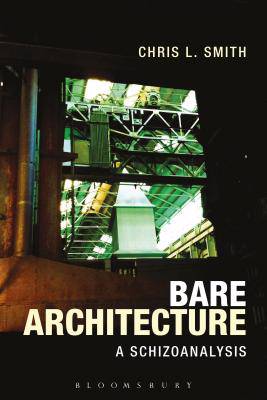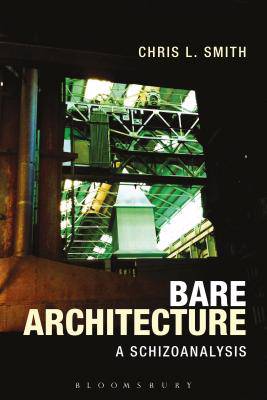
- Afhalen na 1 uur in een winkel met voorraad
- Gratis thuislevering in België vanaf € 30
- Ruim aanbod met 7 miljoen producten
- Afhalen na 1 uur in een winkel met voorraad
- Gratis thuislevering in België vanaf € 30
- Ruim aanbod met 7 miljoen producten
Zoeken
Omschrijving
Bare Architecture: a schizoanalysis, is a poststructural exploration of the interface between architecture and the body. Chris L. Smith skilfully introduces and explains numerous concepts drawn from poststructural philosophy to explore the manner by which the architecture/body relation may be rethought in the 21st century. Multiple well-known figures in the discourses of poststructuralism are invoked: Gilles Deleuze and Félix Guattari, Roland Barthes, Georges Bataille, Maurice Blanchot, Jorges Luis Borges and Michel Serres. These figures bring into view the philosophical frame in which the body is formulated.
Alongside the philosophy, the architecture that Smith comes to refer to as 'bare architecture' is explored. Smith considers architecture as a complex construction and the book draws upon literature, art and music, to provide a critique of the limits, extents and opportunities for architecture itself. The book considers key works from the architects Douglas Darden, Georges Pingusson, Lacatan and Vassal, Carlo Scarpa, Peter Zumthor, Marco Casagrande and Sami Rintala and Raumlabor. Such works are engaged for their capacities to foster a rethinking of the relation between architecture and the body.
Alongside the philosophy, the architecture that Smith comes to refer to as 'bare architecture' is explored. Smith considers architecture as a complex construction and the book draws upon literature, art and music, to provide a critique of the limits, extents and opportunities for architecture itself. The book considers key works from the architects Douglas Darden, Georges Pingusson, Lacatan and Vassal, Carlo Scarpa, Peter Zumthor, Marco Casagrande and Sami Rintala and Raumlabor. Such works are engaged for their capacities to foster a rethinking of the relation between architecture and the body.
Specificaties
Betrokkenen
- Auteur(s):
- Uitgeverij:
Inhoud
- Aantal bladzijden:
- 224
- Taal:
- Engels
Eigenschappen
- Productcode (EAN):
- 9781350138940
- Verschijningsdatum:
- 27/06/2019
- Uitvoering:
- Paperback
- Formaat:
- Trade paperback (VS)
- Afmetingen:
- 156 mm x 234 mm
- Gewicht:
- 322 g

Alleen bij Standaard Boekhandel
+ 159 punten op je klantenkaart van Standaard Boekhandel
Beoordelingen
We publiceren alleen reviews die voldoen aan de voorwaarden voor reviews. Bekijk onze voorwaarden voor reviews.








